目录
- 前言
- 实验内容
- 一、先看作业题目要求
- 二、作业正文
- Introduction
- Pre-lab work
- 3.1
- 3.2
- Experiment Work
- 4.1(2)circuit setup
- 4.1(3)add +12V DC
- 4.1(4)set input x1 and x2
- 4.1(5)
- 4.1(6)
- 4.1(7)
- 4.2(1)(2)
- 4.2(3)
- 4.2(4)
- 4.3(1)(2)
- 4.3(3)
- Conclusion
- 三、资源包内容
前言
花了好大心血完成了一份留学作业系列——2:JFET混频器设计;供大家参考,文末有Multisim程序及无水印Word文档。
实验内容
在本实验中,研究了使用 JFET 的混频器。它包含乘法运算和滤波运算,将来自射频调谐放大器的信号与来自本地振荡器的“载波”信号混合。上变频器和下变频器模式均可用。本实验选择下变频器是因为滤波器要求没有上变频器严格。
该实验由NIMultisim进行。 本实验的主要目的是加深对混合电路理论方面的理解,掌握利用multisim实现混合电路的设计和流程。
一、先看作业题目要求
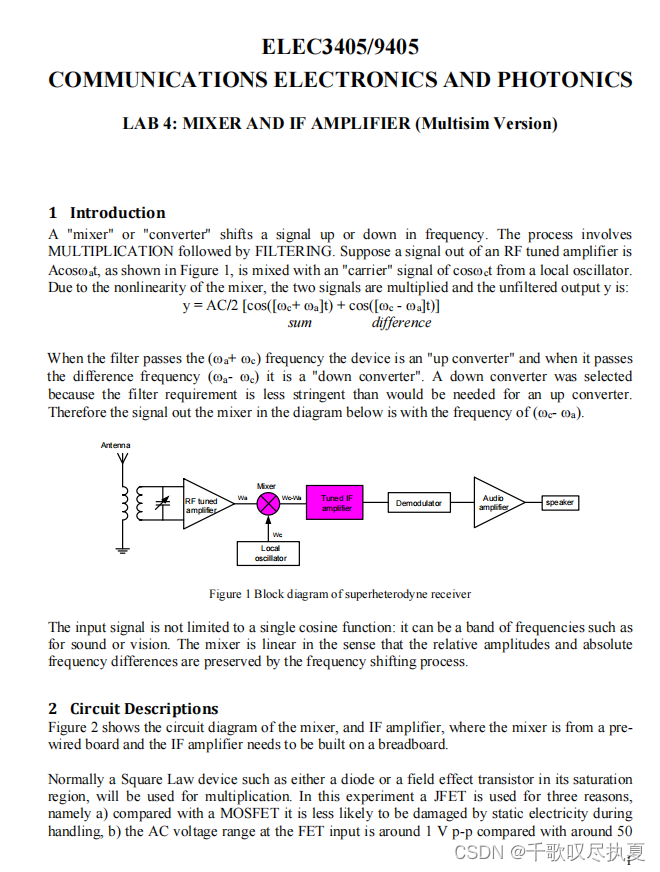
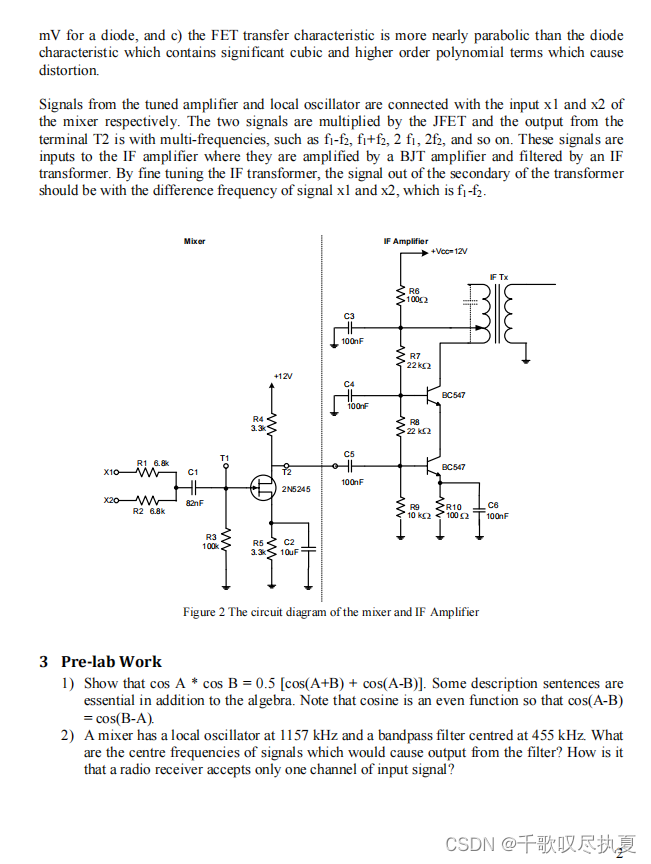
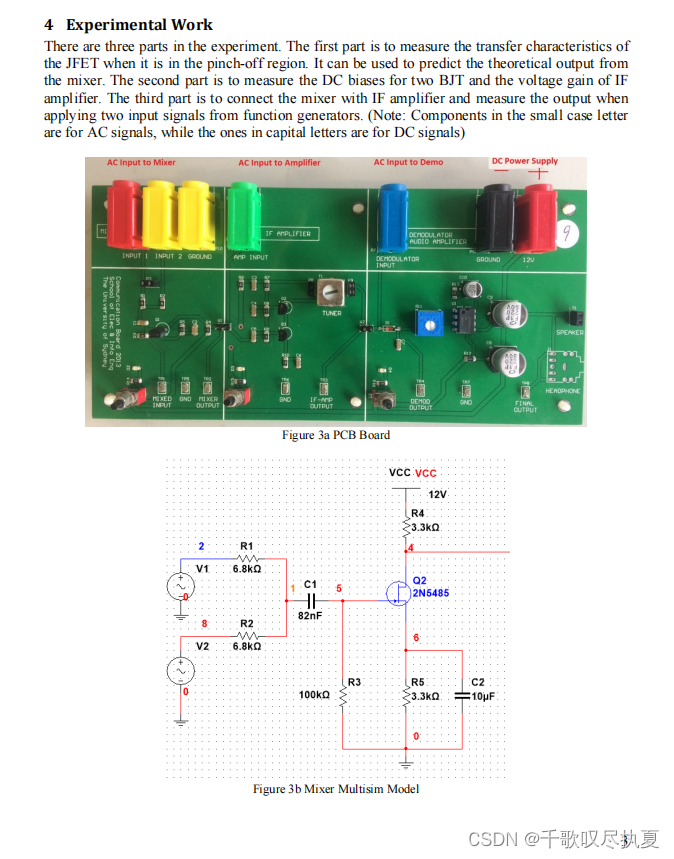

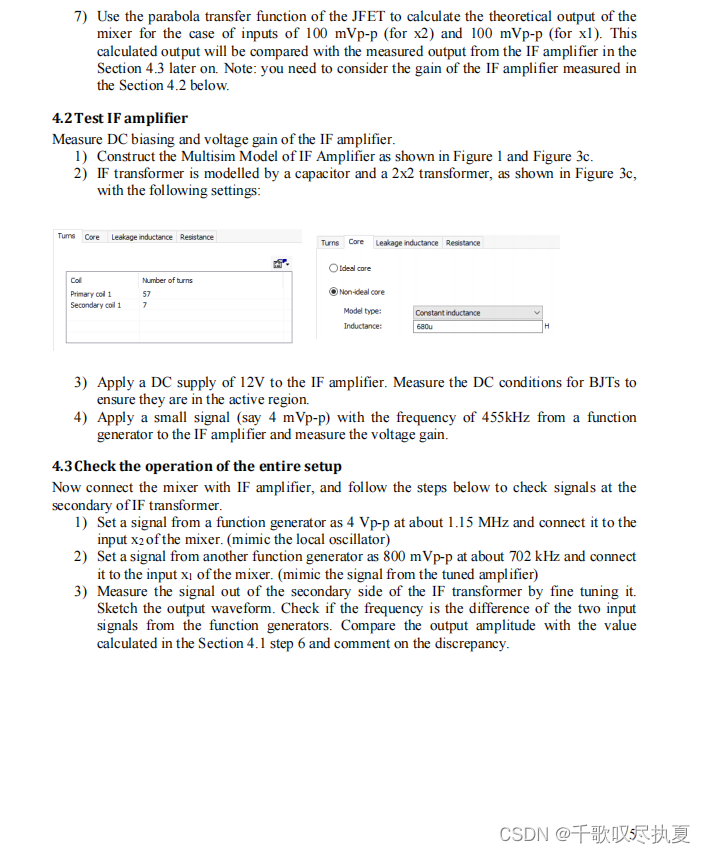
二、作业正文
Introduction
In this experiment, a mixer using a JFET is studied. It contains a multiplication operation and a filtering operation that will The signal from the RF tuning amplifier is mixed with the “carrier” signal from the local oscillator. Both upconverter and downconverter modes are available. The downconverter is chosen for this experiment because the filter requirements are less stringent than those of the upconverter.
The experiment was conducted by NIMultisim. The main purpose of this experiment is to deepen the understanding of the theoretical aspects of hybrid circuits and to master the design and process of implementing hybrid circuits using multisim.
Pre-lab work
3.1

3.2
A mixer has a local oscillator at 1157 kHz and a bandpass filter centered at 455 kHz. This results in a filter output signal with a center frequency of 455 kHz. Adjust the receive band of the receiver to the corresponding band of the channel.
Experiment Work
4.1(2)circuit setup
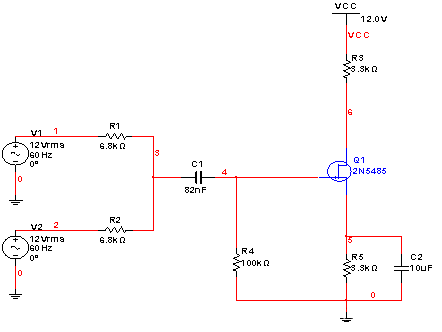
4.1(3)add +12V DC
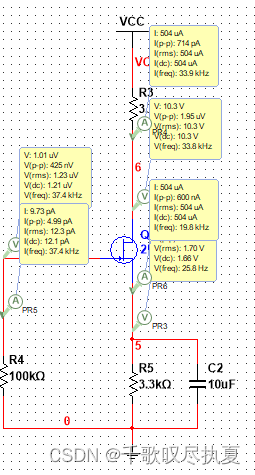
At this time is close to zero, JFET is in the pinch-off region.
4.1(4)set input x1 and x2
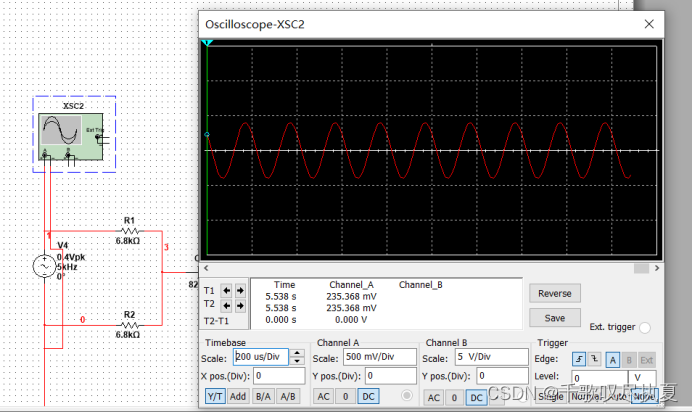
4.1(5)
Display the drain voltage of the JFET on the oscilloscope, then change the oscilloscope display to y~x mode. After adjusting the frequency to eliminate the phase shift effect, the convex transfer characteristics under unloaded conditions are obtained.
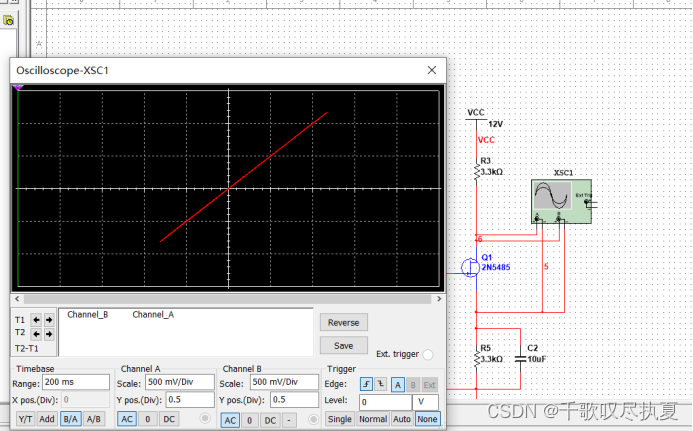
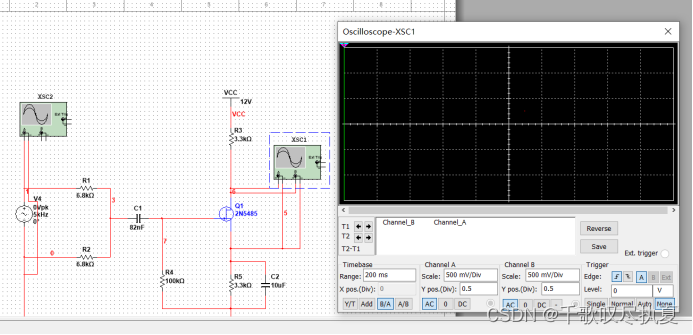
4.1(6)
Choose three pairs of y and x values to calculate + c for the constants a, b and c.Get

4.1(7)
The parabolic transfer function of the JFET is used to calculate the theoretical output of the mixer for x1 and x2 inputs.Theoretically, y≈-81.451v.
4.2(1)(2)
Construction of a multi-simulation model of an IF amplifier with an IF transformer modeled with a capacitor and a 2x2 transformer.
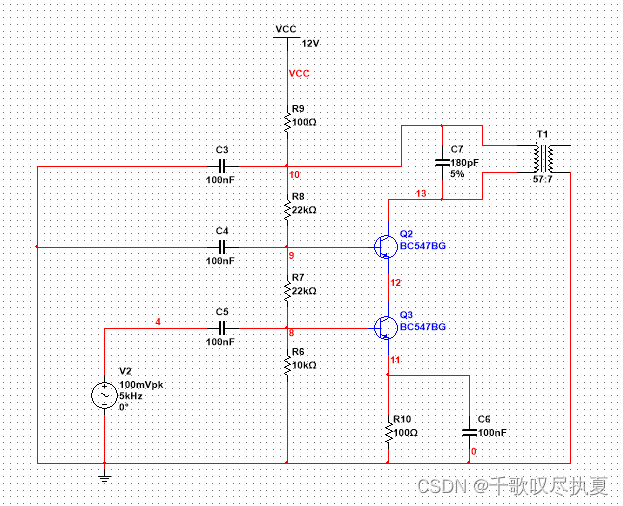
4.2(3)
Apply a 12V DC supply to the IF amplifier. Measure the DC conditions of the BJTs to ensure they are in the active region.
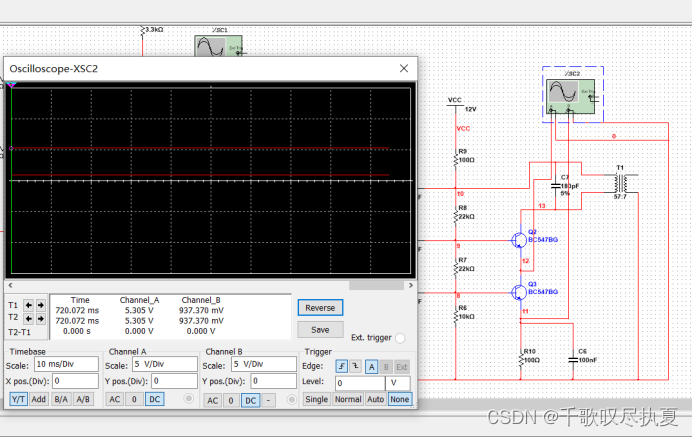
4.2(4)
Application of a small signal from a function generator at 455 kHz to an IF amplifier.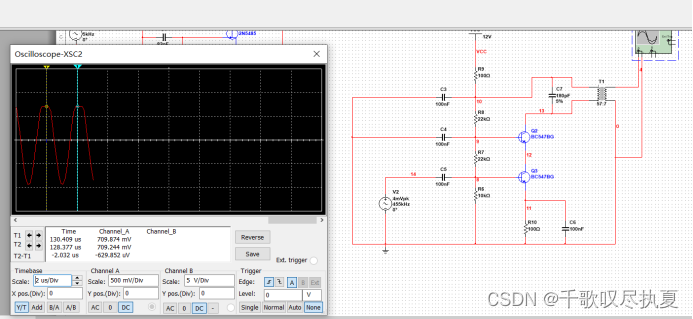
4.3(1)(2)
Set the signal of the function generator and connect it to the input x2 of the mixer.
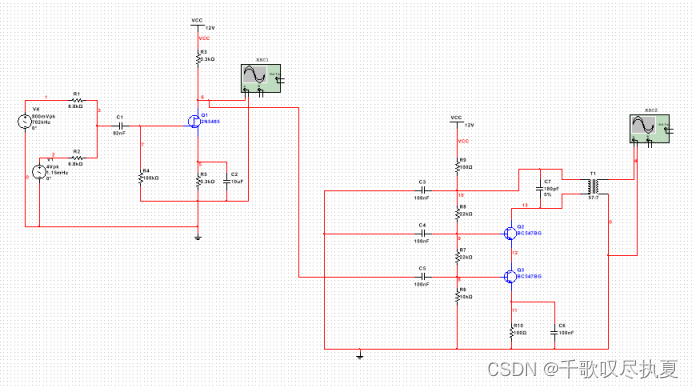
4.3(3)
Get the output waveform. The frequency is close to the difference of the two input signals from the function generator
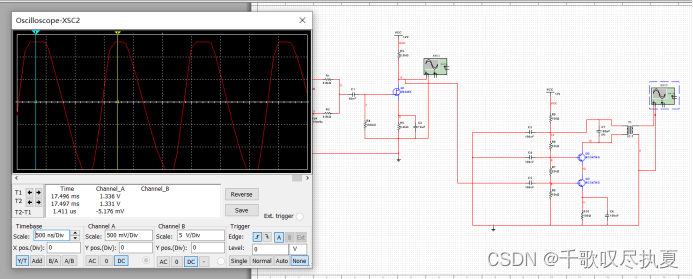
The difference between theory and simulation is influenced by the noise factor, frequency loss, and other factors.
Conclusion
Through the mixing circuit, the output signal only changes the frequency magnitude, other characteristics do not change, to achieve the spectrum shift, which is conducive to the subsequent processing of the signal, such as amplification, frequency selection, etc.
三、资源包内容

)

)

之seq)


)










![练[WUSTCTF2020]朴实无华](http://pic.xiahunao.cn/练[WUSTCTF2020]朴实无华)
)